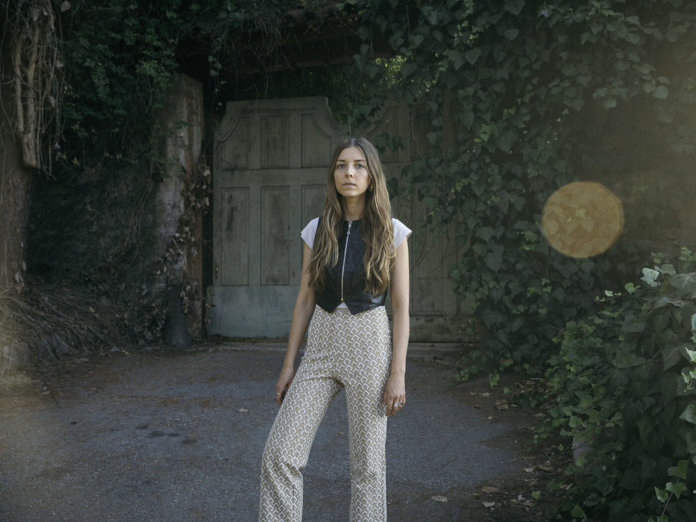In the fall of 2017, Kayla Cohen left her home in Los Angeles for a sabbatical in the high desert of New Mexico. The Southwestern state has a long lineage of expats drawing inspiration from its scenery. The American painter Georgia O’Keeffe most famously made her home here, trading the flowers of ...
In the fall of 2017, Kayla Cohen left her home in Los Angeles for a sabbatical in the high desert of New Mexico. The Southwestern state has a long lineage of expats drawing inspiration from its scenery. The American painter Georgia O’Keeffe most famously made her home here, trading the flowers of Upstate New York for the red hills and cow skulls of the Ghost Ranch in Abiquiu. 4AD co-founder Ivo Watts Russell settled in Santa Fe in 2002. Judy Chicago, Agnes Martin, Peter Hurd, Henriette Wyath and countless other musicians, writers and visual artists have all felt the mysterious, primordial pull of The Land Of Enchantment.
For her part, Cohen holed up in a 100-year-old adobe-style home, an architectural signature of the area drawn from the traditional building techniques of indigenous people. Here, she leaned into space and quiet, creating art in the most pleasant of vacuums. “It had a kiva fireplace, thick adobe walls, a brick floor,” she says. “Like a cocoon to play guitar in.”
The journey to Spring began during a trip to Bandelier National Monument near Los Alamos, where native Puebloan peoples once thrived. “Came to build up my home/In a valley so deep as to hide inside/And I saw myself/Up on the ridge of the mind,” Cohen sings in “Plains”, over acoustic guitar picking and snare taps. It’s just one in a series of impressionistic songs on Spring where Cohen admires and contemplates her surroundings: “Called that abundant design/Shelter for that mind/And a hideout/Look for a way to provide.”
On this dream-like work, clarity is drawn from the therapeutic effects of iconic landscapes and simple thoughts – an ancient canyon or a backroad ephiphany – via lyrics that are alternately impressionistic and personal. It’s a high form of musical travel memoir, melding the beauty of place with a sense of self, leaving it all open-ended enough for the listener to form their own personal picture.
Throughout Spring, Cohen’s singing evokes a dream-like state, where earthen and phantom worlds meet in musical settings that range from acoustic guitar and voice to fuller, more textural surrounds. “Only A Traveler” and “Bess’s Dance” are evocations of British folk-rock’s past, strings and piano melting into acoustic guitars. These accompanying instruments appear sparsely throughout, as on “Golden Fields”, whose piano flourishes evoke a sort of cosmic gospel. “Golden fields meadow valley flats/ You come to me in the day/Whispering lines about time itself,” she sings, evoking some almighty spirit.
What’s perhaps more remarkable than these dreamy overtones is Cohen’s own guitar playing, alternately studied and primitive. On “Lily” and “A’s Lament”, which bookend the album, Cohen’s guitar strings ring as lonesome and thin as the traveller she sings about. By contrast, on “Voice Of The Beloved”, “Comfort’s Faces” and “Only A Traveler”, her guitar sound is robust and powerful, recalling masters like Robbie Basho.
Each mode works in service of the vibe Cohen intends, but Spring’s organic easiness belies the evident care in its creation. In this sense, Spring is like a handspun fabric, stunning to behold in full, but astonishingly meticulous when viewed up close, evidence that often the most easygoing work requires a tremendous amount of thought and editing.



